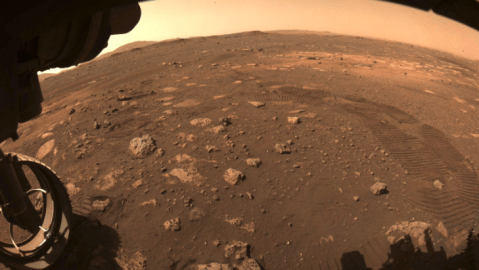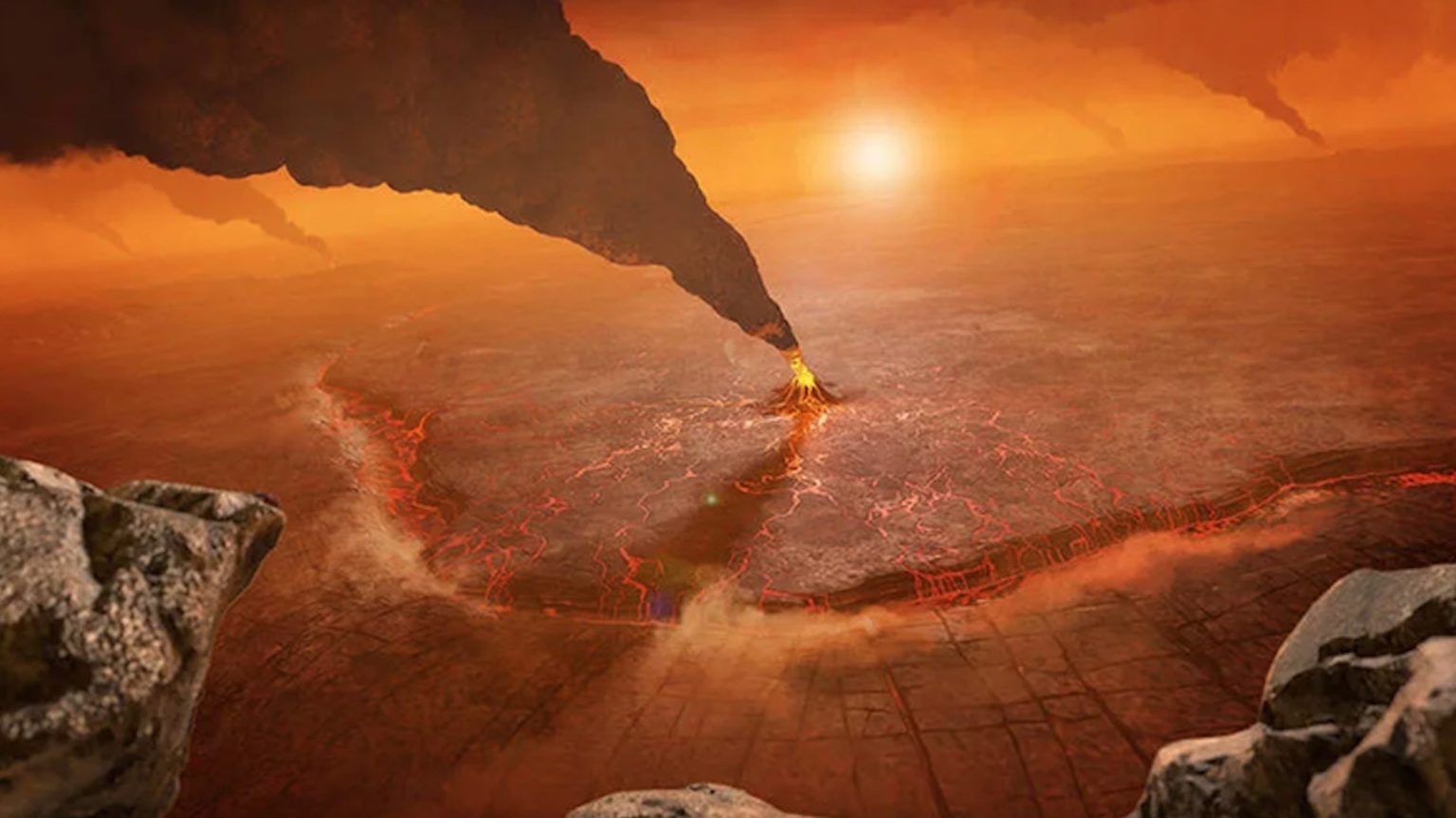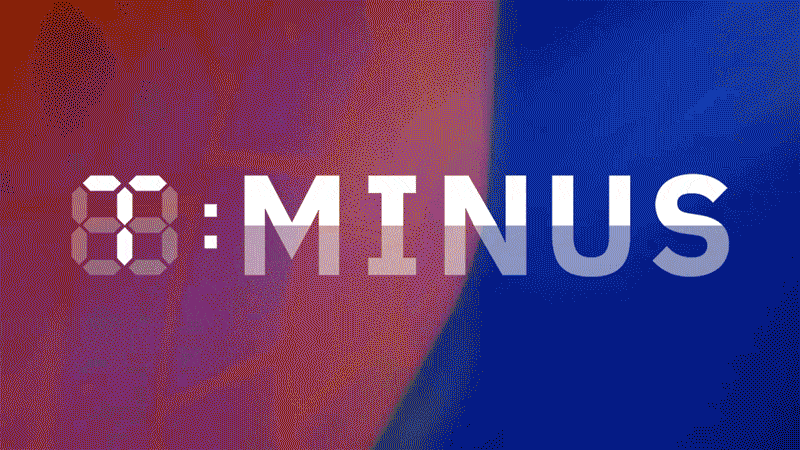NASA’s Perseverance records first-ever sounds of rover driving on Mars

Credit: NASA
- NASA’s Perseverance rover landed on Mars on February 18, and is currently preparing to begin its main mission of searching for signs of ancient life.
- The rover contains two microphone systems, one of which was recently used to capture sounds of the rover traveling at speeds below .01 mph.
- NASA hopes to return Perseverance’s rock collection to Earth by 2031.
It’s been over a month since Perseverance landed on Mars, where the rover will search for evidence of ancient life. Since the landing on February 18, Perseverance has returned images, conducted tests of its robotic arm and steering system, and recorded the sound of wind on the red planet.
This week, NASA released audio of the six-wheeled rover driving on the surface of Mars, captured by Perseverance’s Entry Descent and Landing (EDL) microphones. The 16-minute recording features raw, unedited audio of the rover traveling 90 feet across the Martian surface at speeds approaching about .01 mph.
It’s the first time a NASA rover has captured audio of itself driving.
[soundcloud https://soundcloud.com/nasa/sounds-of-perseverance-mars-rover-driving-sol-16-16-minutes expand=1]
Sounds of Perseverance Mars Rover Driving – Sol 16 (16 minutes)soundcloud.com
It’s also not the most pleasant recording.
“If I heard these sounds driving my car, I’d pull over and call for a tow,” Dave Gruel, lead engineer for Mars 2020’s EDL Camera and Microphone subsystem, told NASA’s Jet Propulsion Laboratory. “But if you take a minute to consider what you’re hearing and where it was recorded, it makes perfect sense.”
It sounds like that partly because the rover’s off-the-shelf EDL microphones weren’t intended to capture sounds from the Martian terrain, but rather to record audio as the rover made its descent. And then there’s the wheels.
“A lot of people, when they see the images, don’t appreciate that the wheels are metal,” Vandi Verma, a senior engineer and rover driver at NASA’s Jet Propulsion Laboratory in Southern California, told NASA’s Jet Propulsion Laboratory. “When you’re driving with these wheels on rocks, it’s actually very noisy.”
Sound waves also behave differently on Mars. Compared to Earth, the red planet’s atmosphere is colder, less dense and contains far more carbon dioxide. That means sound waves travel more slowly and quietly, and the atmosphere would absorb more higher-pitched sounds, an effect known as attenuation.
“The variations between Earth and Mars – we have a feeling for that visually,” Verma said. “But sound is a whole different dimension: to see the differences between Earth and Mars, and experience that environment more closely.”
[soundcloud https://soundcloud.com/nasa/sounds-of-perseverance-mars-rover-driving-sol-16-90-second-highlights expand=1]
Sounds of Perseverance Mars Rover Driving – Sol 16 (90-second highlights)soundcloud.com
NASA released an edited version of the audio that filters out some of the screeches and rattles.
Perseverance has a second microphone system included in its SuperCam instrument, which was designed to identify organic compounds on the Martian surface. SuperCam works by firing a laser at rocks and soil, and using a camera and spectrometers to study the composition of the materials.
“SuperCam’s laser is uniquely capable of remotely clearing away surface dust, giving all of its instruments a clear view of the targets,” Roger Wiens, the project’s principal investigator, told NASA.
How do we fly a helicopter on Mars? It takes ingenuity and perseverance. Tune in on Thursday, March 11, 7pm PT (10pm ET/0300 UTC) to hear from experts working on the Mars Helicopter, a tech demo that’s attempting the first powered flight on another planet. https://t.co/V85kUiHiDP pic.twitter.com/tHpgT3aG3I
— NASA JPL (@NASAJPL) March 10, 2021
NASA JPL on Twittertwitter.com
What’s next for Perseverance? In April, NASA plans to conduct a test flight of the Ingenuity helicopter, which will fly near the rover to monitor the environment and provide imaging support. Soon after, Perseverance will spend one Mars year (687 Earth days) on its main mission: Collecting arguably the most scientifically significant rock collection in human history. NASA hopes the rocks will contain evidence that life once existed on Mars.
But it might take years to find out, considering that the ultimate goal is to send another spacecraft to Mars to return the rocks to Earth for closer inspection. For that retrieval mission, NASA and the European Space Agency have their sights on launching 2028 and returning in 2031.





